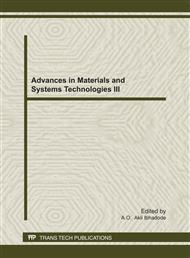p.167
p.177
p.185
p.191
p.199
p.205
p.215
p.223
p.233
Analysis of a Weaver, Hartley and Saw-Filter Based, Image Reject Architectures for Radio Receiver Design
Abstract:
This paper presents an analysis of the three popular image reject architectures used in radio receiver design. The SAW-filter based image reject architecture is the simplest to implement and has the lowest power consumption while the weaver is the most complex with the highest power consumption. The Hartley architecture which utilizes half the number of mixers used in the weaver architecture does not consume as much as the weaver architecture but is not as efficient due to the use of the 900 phase shifter. The three architectures are optimized for various design specifications. The receiver design with power constraints is better realized using the SAW filter while the receiver with portability as its highest priority is better realized using the weaver architecture. The architecture implemented for any particular radio design is determined by the receiver specification with the highest priority.
Info:
Periodical:
Pages:
199-204
Citation:
Online since:
October 2011
Authors:
Keywords:
Price:
Сopyright:
© 2012 Trans Tech Publications Ltd. All Rights Reserved
Share:
Citation:


